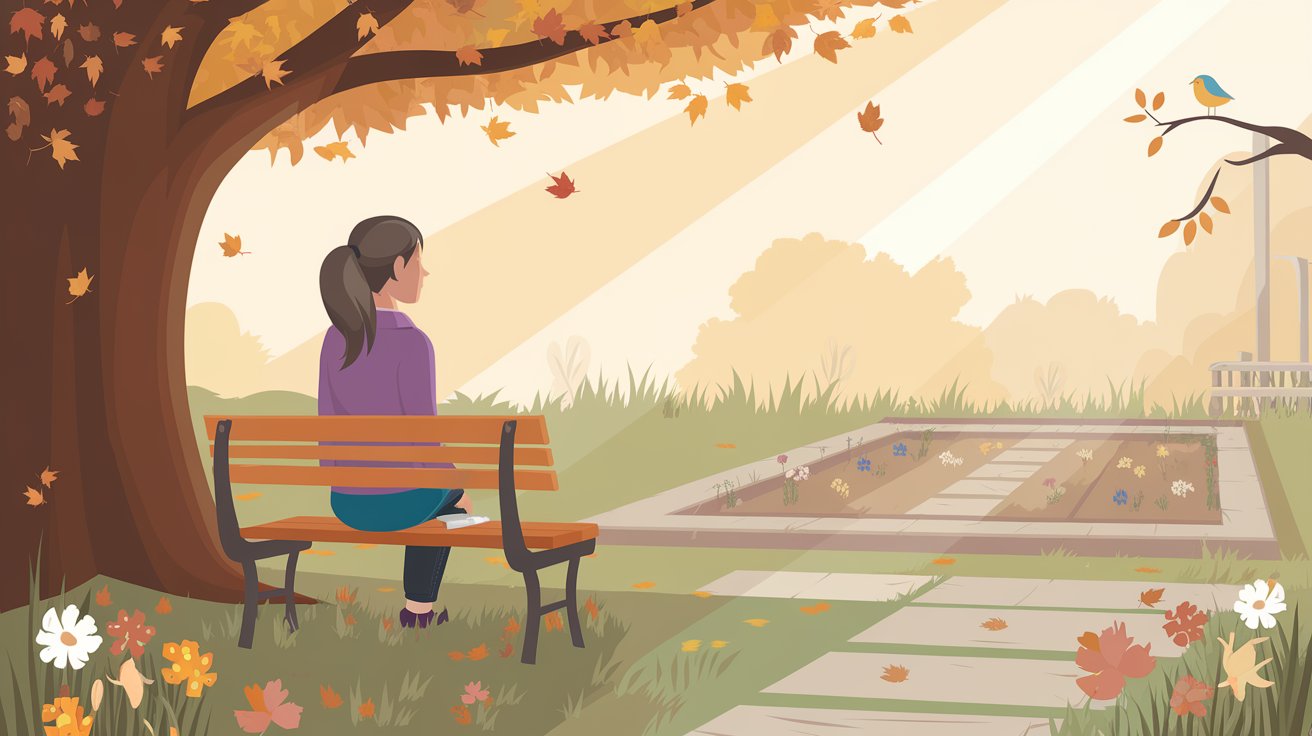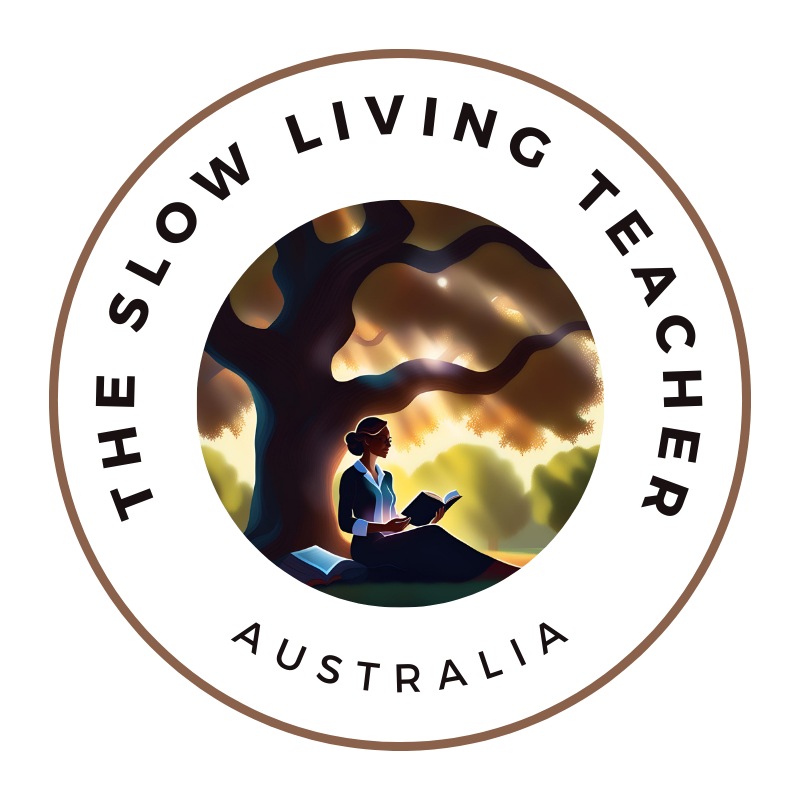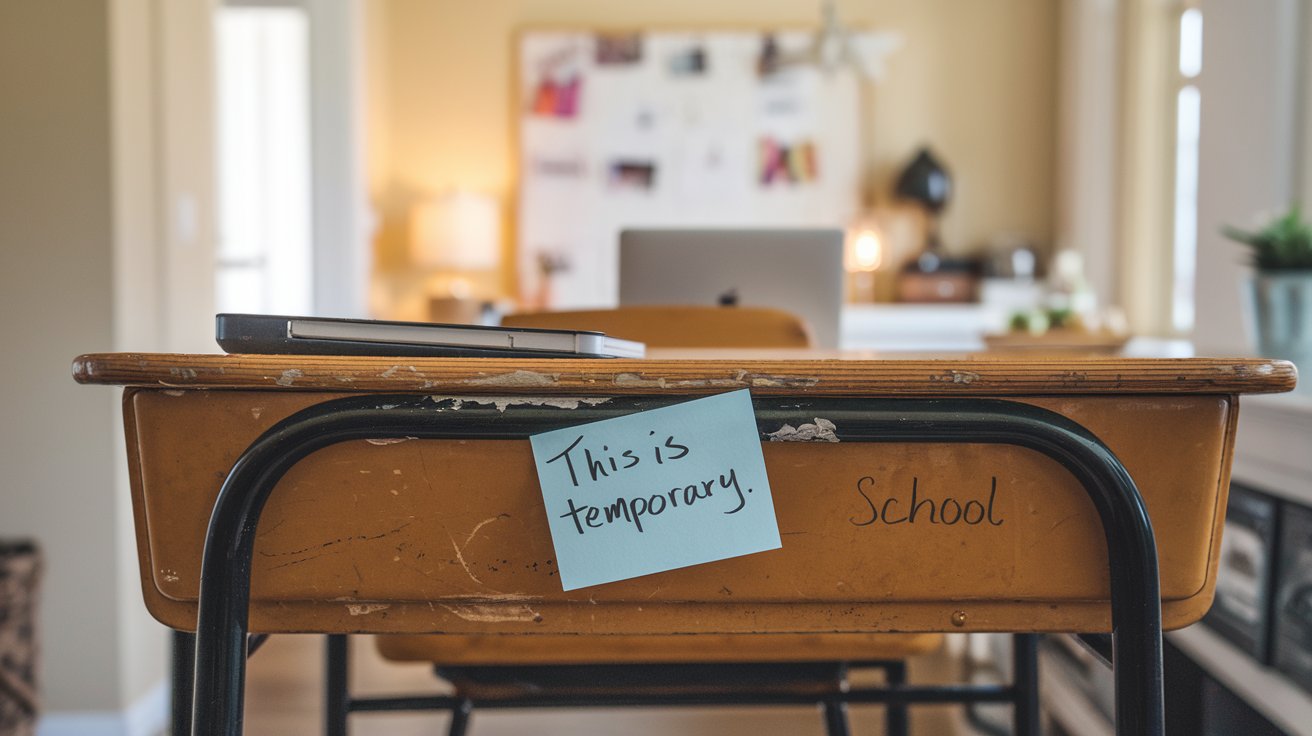Your cart is currently empty!

Mindful Living for Teachers
Teaching can feel like a whirlwind of endless tasks, but it doesn’t have to be that way. By embracing slow and mindful living principles, you can create a calmer, more intentional rhythm to your school year. From setting work boundaries to finding moments of stillness, discover practical strategies to simplify your routine and bring balance…
This post may contain affiliate links. At no cost to you, I may earn a small commission if you click on any affiliate link within my blog. Some of the content on this website was created with the help of AI.
Introduction
As teachers, we’re so used to the rush. There’s always papers to mark, lessons to plan, and meetings to attend. For years, I struggled to find balance in the chaos, wondering if mindful living for teachers was even possible.
I thought slowing down was impossible.
I had convinced myself that the busy pace was just part of the job. But when burnout started to creep in, I realized something had to change. That’s when I discovered slow living.
This post is here to help you embrace mindful living principles as a teacher for a calmer, more balanced school year. These tips are realistic, simple, and achievable, even for the busiest teachers. Let’s take a look.
Simple Tips for a Calmer School Year
1. Start Your Day with Intent
Mornings set the tone for the day. By starting with calm and purpose, you can carry a sense of peace into whatever the day brings. Even small, mindful choices in the morning can help you feel more grounded and in control throughout the day.
- Practical Tip: Create a calming morning ritual: sip tea, journal, or simply breathe deeply for five minutes.
- Reflective Insight: For years, my mornings were a mad dash out the door, leaving me frazzled before the day even began. Now, I spend a few quiet minutes just doing some mindful breathing. It’s not a lot of time, but it shifts my entire mindset. If you’re not a morning person, start with just one small adjustment, like waking up five minutes earlier or choosing your outfit the night before.

2. Simplify Your Classroom Routine
Trying to juggle too much at once leads to stress and inefficiency. Simplifying your routine helps you focus on what truly matters. A streamlined classroom routine doesn’t just benefit you, it also creates a more predictable and calm environment for your students.
- Practical Tip: Choose one priority task per day instead of multitasking.
- Reflective Insight: I used to pride myself on multitasking until I realized it left me scattered and exhausted. Focusing on one priority each day, whether it’s planning next week’s lessons or catching up on some marking, has been a game-changer. Everything still gets done, but without the overwhelming rush. Even better, it’s allowed me to feel more accomplished at the end of the day, knowing I’ve tackled the most important task.

3. Make Space for Stillness
In the hustle of teaching, it’s easy to overlook moments of quiet. Yet, these pauses can bring clarity and refresh your energy. Stillness doesn’t have to be long or formal; even brief pauses can reset your mind and create a moment of calm amidst the busyness.
- Practical Tip: Take a mindful pause during your day. Enjoy your lunch without distractions or spend five minutes observing nature.
- Reflective Insight: One day, I decided to step outside during lunch instead of eating at my desk. I watched the wind move through the trees, and for the first time in weeks, I felt a sense of calm wash over me. That’s when I realized how powerful small moments of stillness can be. It’s not about making time, it’s about noticing the time you already have and using it well.

4. Set Boundaries Around Work
Creating clear boundaries ensures your personal time stays sacred. It’s a crucial step toward feeling more rested and present. Boundaries not only protect your time but also model healthy habits for your colleagues and students.
- Practical Tip: Commit to leaving work at work. Pack up and mentally “clock out” at a set time each day.
- Reflective Insight: I used to bring work home and felt like I was always “on.” It wasn’t until I set firm boundaries that my evenings and weekends started to feel like true rest. Now, when I close my laptop at 4:30 (or even earlier), I know it’s time to focus on myself and my family. If you’re struggling with guilt, remind yourself that rest makes you a better teacher and person, in the long run.

5. Navigate the Home-School Balance as a Working Parent
Balancing work and home life can feel like an impossible task, but small adjustments can help create a more manageable rhythm. Finding harmony between these roles often requires prioritizing, delegating, and letting go of perfection.
- Practical Tip: Delegate tasks at home and set realistic expectations. Create a shared family calendar to simplify planning and reduce stress.
- Practical Tip: Incorporate mindful living practices with your kids. Share a calm meal, read together, or enjoy a tech-free family walk.
- Reflective Insight: As a working parent, I know the challenge of juggling school deadlines and home responsibilities. I used to be so proud of myself for doing it all, but I’ve come to realize this is nothing to be proud about. Now, all I want to do is slow down. So we have simple rituals as a family, like sitting down for dinner without devices. These moments ground us and remind me that mindful living isn’t about having more time, it’s about cherishing the time we have. Mindful living as a working parent often means saying “no” more often and teaching your children the value of quality over quantity in life.
- Encouraging Thought: It’s not about perfection; it’s about finding simple, intentional ways to slow down in the chaos.

6. Stay Organized While Slowing Down
Being organized is key to both effective teaching and embracing mindful living for teachers. When your systems are in place, you can create more space for calm and intention. Organization doesn’t mean doing more, it means creating order so you can focus on what truly matters.
- Practical Tip: Use a weekly planner to prioritize tasks. Start each week by jotting down what’s essential, and let go of non-urgent items.
- Practical Tip: Automate repetitive tasks, like grading with rubrics or sending pre-written parent emails. This frees up time for what truly matters.
- Reflective Insight: I used to struggle with balancing mindful, slow living and staying organized, feeling like I couldn’t have both. But I found that simplifying my planning process and focusing only on what’s essential, not only reduced my stress but also helped me work more efficiently. Staying organized isn’t about perfection; it’s about creating systems that support you, not overwhelm you.

7. Set Boundaries During Hectic Times
High-pressure periods like exam weeks or parent-teacher interviews demand extra effort, but boundaries can help you navigate them with less stress. Protecting your time during these periods ensures you can give your best without burning out.
- Practical Tip: Limit after-hours communication by setting an auto-reply on your email or politely letting parents and colleagues know when you’ll be available.
- Practical Tip: Plan ahead by preparing materials or scheduling tasks in advance, so you’re not scrambling at the last minute.
- Reflective Insight: During exam season, I used to answer emails late into the night, thinking it was necessary. Once I set clear limits like no checking emails after 4.30pm, I realized the world didn’t fall apart. Instead, I felt more focused and present during my working hours, and my stress levels dropped significantly. Hectic times don’t have to feel chaotic if you’re intentional about managing your energy and time.
- Encouraging Thought: Even during busy times, boundaries allow you to protect your energy and stay grounded.

8. Celebrate Small Wins
Acknowledging your successes, no matter how small, is an easy way to shift your mindset and build a sense of gratitude. Celebrating wins is also a way to keep your motivation alive during challenging times.
- Practical Tip: Keep a gratitude journal or reflect on one thing that went well at school or home each day.
- Reflective Insight: At the end of each day, I jot down one moment that made me smile. Some days, it’s a breakthrough with a student; other days, it’s just the fact that I made it through. This simple habit has shifted my mindset, helping me focus on the positives instead of dwelling on the stress. When you celebrate small wins, you’re also building momentum for bigger successes in the future.
Conclusion
Mindful living for teachers isn’t about doing less. It’s about doing what matters with intention and calm. It’s about creating space for joy, for rest, and for the moments that truly matter.
You deserve a school year that feels peaceful and fulfilling, not just productive. Try one tip this week and see how it feels. And don’t forget to share your experience in the comments. I’d love to hear from you!





One response to “Mindful Living for Teachers”
[…] on a journey to find balance, to create space for slow living, and to focus on what really matters. And as much as I’m excited for what’s next, I’m also […]